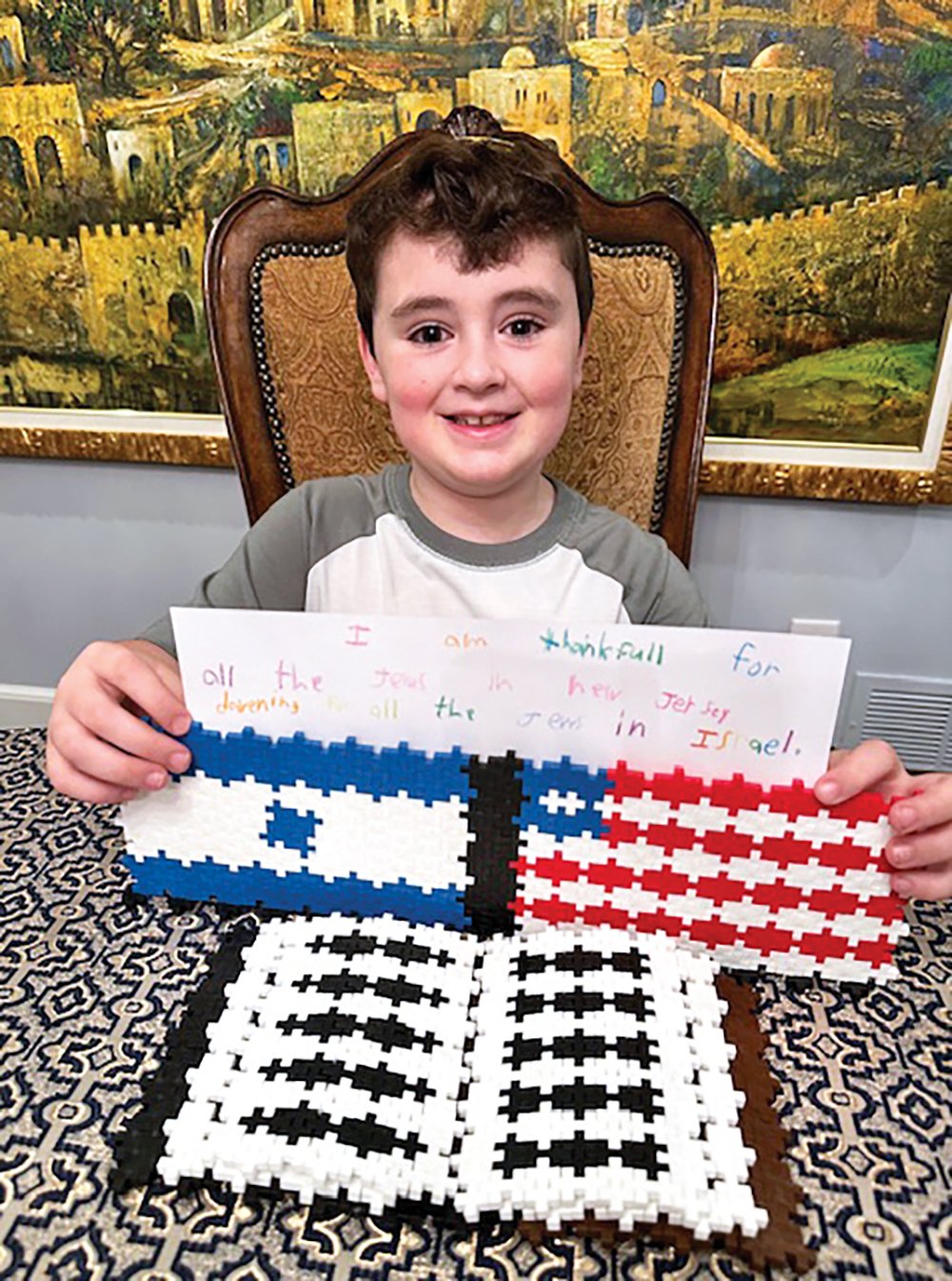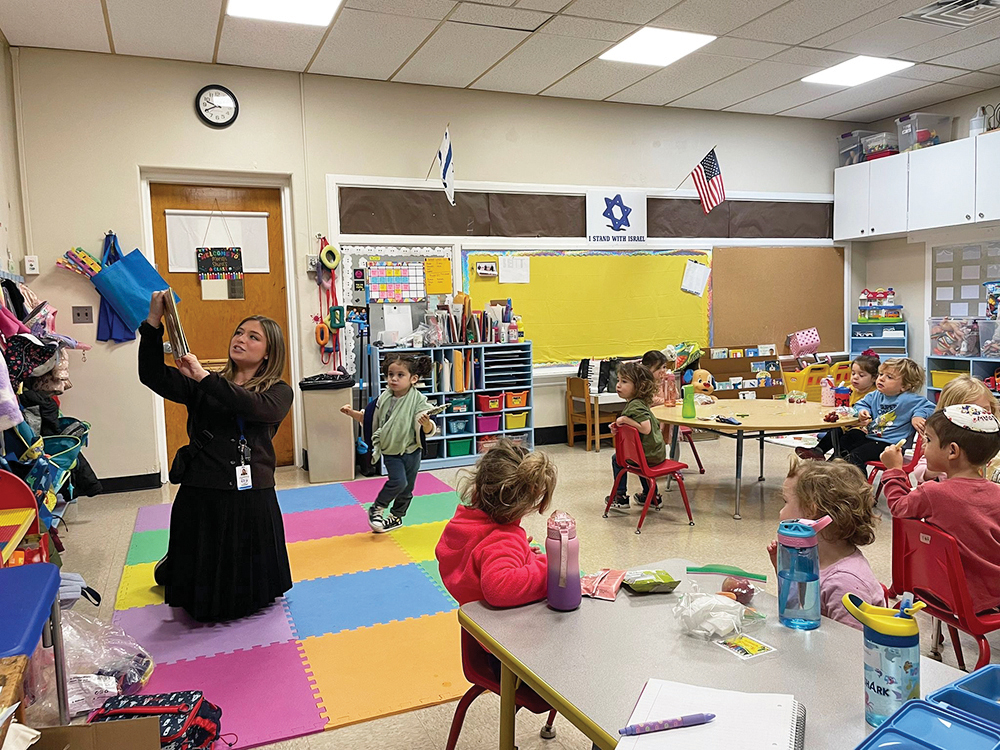The October 7 depravity has, of course, revealed the national glue that binds all of Klal Yisroel together. There is an unprecedented unity among us that has brought people to come closer to Hashem, and other Jews. The newly revealed national glue has caused many people to rethink long-held positions.
There is, however, debate about a rather tragic question that Jewish military leaders are now facing. There are probably some 222 hostages held in Gaza now. May a building with known terrorists inside be bombed if there is a probability that our citizens might be in there as well?
There are certain givens here. The Hamas playbook is to hide behind women and children and other innocents, so there is a strong probability that they are using the innocent hostages to save their own necks. But what is the halacha here, in terms of what Jewish armed forces can and cannot do?
The question is emotionally rattling because we are crying and davening for the safety of the hostages, and yet at the same time, it is very clear to us that we have a den of vipers in Eretz Yisroel’s backyard. It is a question that no one would ever wish to actually have, and we daven fervently that the hostages should be returned safely. What follows is a brief overview of the relevant sources and related matters. At first glance, it may appear that some of the sources brought here appear to be irrelevant. We will see, however, that the later authorities cite these sources for our discussion here.
The Obligation to Save
We know that halacha mandates that we try to save the lives of our fellow citizens. The Shulchan Aruch (CM 426:1) states that one who sees his fellow Jew drowning or set upon by thieves, and he can save the victim—if he does not do so he is in violation of “Do not stand idly by your brother’s blood” (Vayikra 19:16). The Rambam adds a caveat that the obligation is only when one has the capability of saving him (Sefer HaMitzvos Lo Saaseh #297). The Issur V’Heter (59:38) writes that whomsoever could have saved but did not, it is considered as if he himself had killed him personally.
There are a number of other mitzvos that one fulfills as well.
- Hashavas Aveida: The mitzvah is not just for lost items. The verse in Parshas Ki Seitzei (Devarim 22:2) discusses the mitzvah of hashavas aveida, returning a lost object, with the words, “v’hasheivoso lo, and you shall return it to him.” The Gemara in Sanhedrin (73a), however, includes within its understanding of these words the obligation of returning “his own life to him as well.” For example, if thieves are threatening to pounce upon him, there is an obligation of “v’hasheivoso lo.” This verse is the source for the mitzvah of saving someone’s life. It is highly probable that it is to this general mitzvah that the Shulchan Aruch refers in Shulchan Aruch Orach Chaim 325.
- “Lo suchal l’hisalem, you cannot shut your eyes to it.” There is yet another negative commandment associated with the positive commandment of hashavas aveida, and that is this verse in Devarim (22:3). This verse comes directly after the mitzvah of hashavas aveida. The Netziv, Rabbi Naftali Tzvi Yehudah Berlin, in his HeEmek She’eilah, refers to this mitzvah as well in saving life.
- “V’chai achicha imach, and your brother shall live with you.” Rav Achai Gaon in his She’iltos (She’ilta #37), based upon the Gemara in Bava Metzia 62a, understands these words in Vayikra (25:36) to indicate an obligation to save others with you. The Netziv in his HeEmek She’eilah understands it as a full-fledged obligation according to all opinions.
- “V’ahavta l’rei’acha kamocha, and love thy neighbor as yourself.” The Ramban, in Toras HaAdam Sha’ar HaSakanah (pp. 42–43), understands this verse of a directive to save our peers from dangers as well.
What If It’s Dangerous
If the saving is dangerous to the rescuer and involves risk, then there is a debate between the Talmud Yerushalmi and the Talmud Bavli as to whether one is obligated in saving or whether there is no obligation. The Smah rules like the Bavli (CM 426:2) and so does the Mishna Berurah (OC 329:19). The Mishna Berurah, however, adds that if it is dangerous to the rescuer, he is not obligated because his own life precedes the life of another person. Even if it is possibly dangerous to him, that pushes off the obligation—even if the other will definitely be saved.
It is unclear, however, as to whether the Talmud Bavli merely rules that there is no obligation or that there is a prohibition in doing it.
During Wartime
All this, however, is during peacetime. During wartime, the Rambam writes (Hilchos Shabbos 2:23) that when there is an enemy that attacks a Jewish city it is a mitzvah incumbent upon everyone who can to come and assist their brethren and save them—even on Shabbos and it is forbidden to wait until Motzei Shabbos.
How Does It Work When There Is No Obligation to Endanger Oneself?
The answer is that wartime is inherently different. See Rav Chaim Soloveitchik on Parshas Shlach citing the pasuk in Shoftim 5:18, “Zevulun am chairaif nafsho.” Rav Elchonon Wasserman, zt”l HY”D, comes to this conclusion in his Kovetz Shiurim (Kesuvos Vol. I, siman 9). He derives this from Esther having risked her life when she stood before Achashverosh. This is the view of the Minchas Chinuch (Mitzvah #425) and the Netziv (Meromei HaSadeh, Eruvin 45a.) There is a question as to whether it is only a milchemes mitzvah (commanded war) or any type of war, especially in modern times, but there is no question that when Jews have been actually attacked even in modern times that it is a milchemes mitzvah.
The Source in Tanach
For background to the underlying halachic issue, here is a brief overview of some of Shmuel Bais (19: 41-44; 20:1-15):
After the rebellion of Avshalom, we learn of Sheva Ben Bichri from Shevet Binyomin who had blown a shofar and publicly stated, “We have no share in David, nor have we any portion in the son of Yishai; every man to his tents, O Israel” (19:41–44; 20:1). Some in Klal Yisroel followed Sheva instead of escorting Dovid HaMelech to Yerushalayim. Dovid HaMelech then took steps to assert his authority.
Yoav and Avishai were a second force that Dovid sent and they marched up north to Evail of Bais Maacah, where Sheva was holding out. When Yoav attacked Evail of Bais Maacah, a “wise woman” of the town stepped onto the wall and asked for a meeting with Yoav. When promised that he would not hurt the town or any of its inhabitants provided they surrendered Sheva, she got the people of the town to toss Sheva’s head over the wall to the besiegers.
Presumably, the rationale of the townspeople not to hand him over was the prohibition of causing the death of fellow citizen (through a grama, an indirect action) and/or directly killing a fellow Jew.
The Tosefta in Trumos 7:23
The issue is elaborated upon in a Tosefta in Trumos 7:23:
A group of [Jews] to whom gentiles say, “Give us one of you to be killed. If not we will kill all of you”; they should let themselves be killed and not deliver them one soul from Israel. But if they specifically mentioned the name of that person to them, for example, Sheva ben Bichri, they should give him up and not let themselves be killed.
Rabbi Yehuda said, “When do these words apply? In a case when he, the designated one, is on the inside and they are on the outside [of the fortified city]; but in a case when he is inside and they are inside, since he will be killed and they too will be killed, they should give him up and not let themselves all be killed. And so does it state in Shmuel Bais 20:22: And the woman came to all of the people in her wisdom. ‘She said to them, Since he will be killed and you will be killed, give him to them and do not kill all of you.’”
Rabbi Shimon says, “This is what she said to them, ‘Anyone who rebels against the monarchy [of the House of David] is liable to [receive] the death penalty.’”
Understanding the Two Views
There is a debate as to how to understand the two views enumerated in the Tosefta. The simple reading is that Rabbi Yehudah’s view is that since they will all be killed anyway, then they should comply with the request. In the simple understanding of Rabbi Yehudah’s view, they would only have been permitted to hand him over—but not kill him. Rav Shimon’s view is that he had to have been guilty. The operative principle of Rabbi Shimon is that it is only because he was guilty that they could have either killed him or handed him over.
Some Hold Both Requirements Are Necessary
Rabbi Dovid Pardo (1718-1790), in his Chasdei Dovid, writes that they both agree with each other. This may also be the view of the Meiri cited in Sheyarei Knesses HaGedolah (YD 197, HaGaos Beis Yoseph #38).
Implication of the Tosefta
If the view of Rabbi Yehudah in the simple reading is the authoritative view, then one might be able to make the argument that since the Hamas terrorists are avowed murderers in a war and the individual or the hostages will be killed by them anyway, then more lives would be saved in bombing the building than not bombing it. According to the Chasdei Dovid it would be more problematic.
The Chazon Ish
The Chazon Ish (Sanhedrin Siman 25) brings an opinion that causing an arrow to be redirected to a place where fewer people will be killed is an act of salvation and may perhaps be permitted. The Chazon Ish is not conclusive but perhaps it may be used as a contributing factor to allow for the destruction of the building where terrorists are found.
Are They Even There?
Another factor is that it may not be clearly known that the hostages are, in fact, there with the terrorists. Intelligence is often faulty and we cannot take the word of the terrorists without proof.
Have They Already Escaped?
There is also the possibility that the terrorists have already escaped from that particular place after the intel of their location was received. There seem to be three tunnel systems in Gaza. In the northeast, there are tunnels that Hamas has built to sneak into Israel. There is a second underground network in Gaza city that the IDF and Shin Bet refer to as the “Gaza Metro.” It is a vast labyrinth of tunnels that are several kilometers underground, used to keep rockets, fuel and ammunition caches. It is used to transport people and goods, and to house Hamas command and control centers. In 2021, Hamas claimed to have 311 miles of tunnels underneath Gaza.
Have They Already Been Killed?
The fact is that the terrorists are so hate-filled that they may have already killed the hostages when they saw that their destruction may be imminent. This, in fact, happened with Hamas regarding the three boys who were kidnapped in June of 2014 from Alon Shvut.
These are the factors and sources, and/or their combination that poskim would take into account as to the permissibility of bombing buildings where there may be an indication that hostages are being held. Many poskim have also ruled that during wartime the parameters are different and one should do whatever one can to maximize the safety of the most people.
The author can be reached at [email protected]












